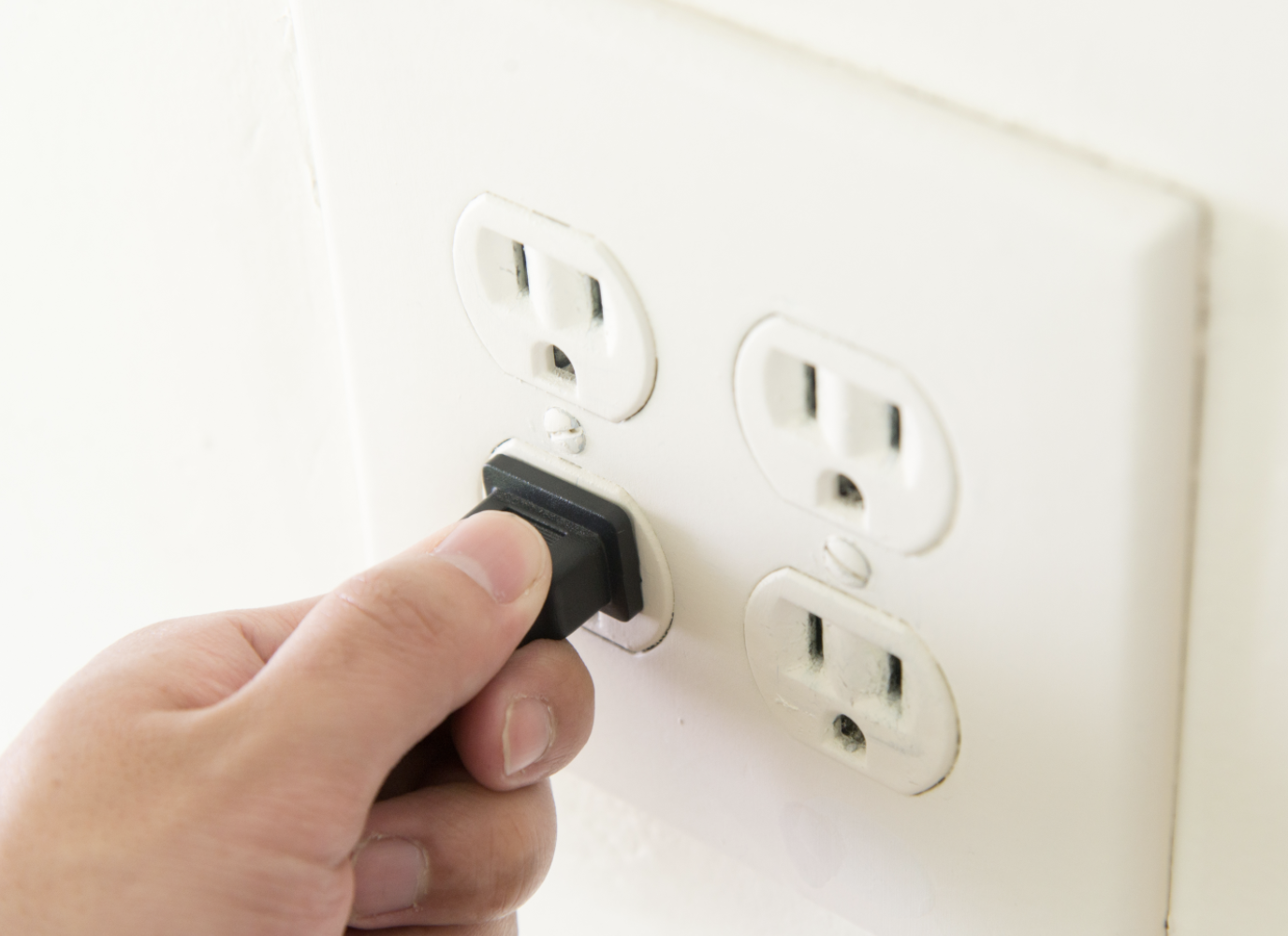How Many Receptacle Outlets Can You Install on One Circuit?

By: Dave Varga | Feb 10, 2022
Not too many times, when speaking about the National Electrical Code, do we hear the phrase “as many as you want” or “unlimited.” However, when talking about a 15-amp 120-volt convenience outlet branch circuit in a dwelling, we can say those phrases, because it is true! We can install an unlimited number of outlets on that dwelling circuit. Let’s look at the Code and clear up any confusion about why we really wouldn’t install so many receptacles on one circuit.
Commercial Receptacle Outlets
The confusion likely starts on the commercial side of Code. Per Article 220.14(I), a commercial convenience receptacle outlet is calculated at 180 volt-amperes (va) per single or multiple receptacles on one yoke. So, when planning that 20-amp 120-volt (v) branch circuit, you have a limited number of receptacles that you can install. The calculation would look like this: Using Ohms Law (I = P/E) we divide 180 va by 120 v, giving us 1.5 amp per receptacle outlet. Now we simply take our 20-amp branch circuit and divide by 1.5 amp, and that gives us 13.3, or 13 receptacle outlets maximum on that branch circuit. If you have a set of construction drawings and specifications, you will need to read the specifications thoroughly. Some specifications will limit the amount of receptacle outlets on a branch circuit to ten or eleven.
Residential Dwelling Receptacle Outlets
Unlike a commercial location, a dwelling must have a certain amount of convenience receptacle outlets. Dwelling convenience receptacles are laid out per Article 210 Part III. This article covers the requirements for all rooms throughout a dwelling. Let’s use a basic 2,500 square foot house as an example and calculate the number of 15-amp 120-volt branch circuits needed. We will not include the kitchen small appliance branch circuit or the laundry receptacle branch circuit since they are calculated differently. Article 220.14(J) requires us to use 3 va per square foot for our receptacle/lighting calculation. The calculation would look like this: We take the 2,500 sq. ft. multiplied by 3 va to get 75,000 va. Again, using Ohm’s Law, 7.500 va divided by 120 v (120 v because that is the voltage of the branch circuit) gives us 62.5 amps. Now we know our receptacle (and lighting) amperes and we will simply divide that number by the size of our branch circuits to be used. 62.5 amps divided by 15 amps equals 4.16. So, a minimum of four 120 v 15-amp branch circuits would be used. Personally, I would use five branch circuits so let’s use that number. Now, count the number of convenience outlets laid out and divide by five. A dwelling this size might have about 55 receptacle outlets. Divide 55 by the 5 branch circuits and that tells us that 11 receptacle outlets on each branch circuit makes sense. If the homeowner decided that the Code minimum number of outlets wasn’t enough and added 20 more, that is fine too (75 divided by 5 equals 15 receptacle outlets per branch circuit). Remember, convenience receptacle outlets are for convenience and do not add load as we add receptacles. Picture your bedroom with an outlet installed every four feet around the room. Did we install any additional load, or did you install additional convenience?
NEC – Minimum Standard
Remember, our National Electrical Code is basically a minimum standard. The Code minimum might not be adequate for good service or future expansion. You as the owner or electrician can go above and beyond the Code. Go ahead and design and install an electrical system that meets and exceeds the NEC. Want to know more about the National Electrical Code? Get started today at www.jadelearning.com!

